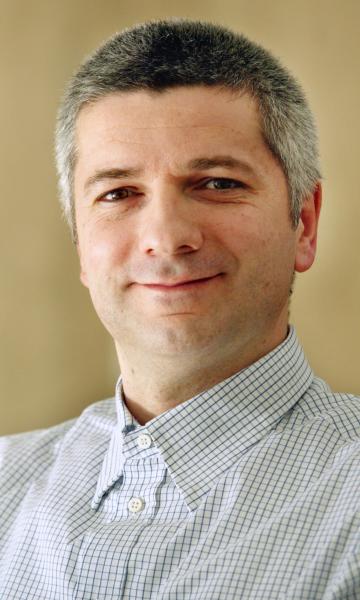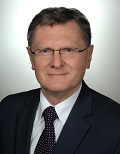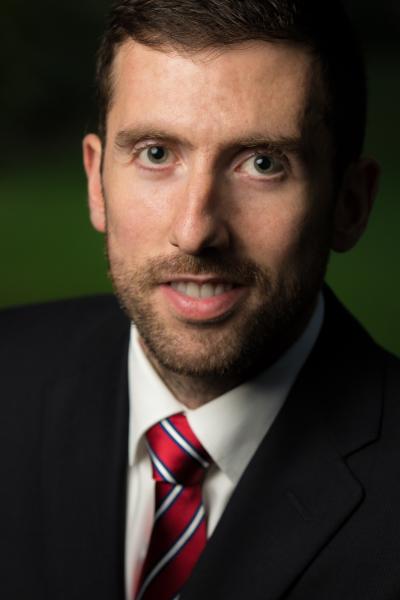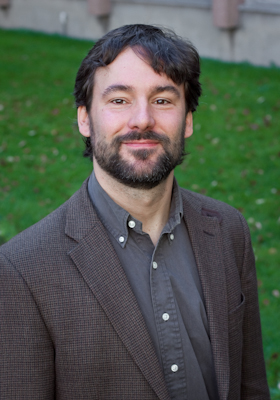
|
Prof. Dionisio Bernal, Northeastern University, USA. Dionisio Bernal obtained his PhD in 1979 at the University of Tennessee and is a Professor and director of the structures area at Northeastern University (NU) in Boston. He is the recipient of the Moisseiff Award from the American Society of Civil Engineering (ASCE) for his work on instability of structures subjected to strong earthquakes and of the Martin W. Essigmann and the Hayes awards for teaching and research excellence at NU. He has published over 100 papers on structural dynamics, earthquake engineering and damage characterization from measured signals and is co-Author of a McGraw-Hill textbook on Reinforced Concrete Design. He served as the Chair of the Health Monitoring task group of the Engineering Mechanics division of ASCE from 2001 to 2003. |

|
Prof. Branko Glisic, Princeton University, USA. Branko Glišić received his degrees in Civil Engineering and Theoretical Mathematics at University of Belgrade, Serbia, and Ph.D. at the EPFL, Switzerland. After eight-year long experience at SMARTEC SA, Switzerland, where he was involved in numerous SHM projects, he has been employed as an Assistant Professor at Department of Civil and Environmental Engineering of Princeton University. His main areas of interest are SHM methods, advanced sensors based on fiber-optics, large-area electronics and conductive polymers, SHM data management, and smart structures. He introduced SHM in classrooms as regular undergraduate and graduate courses at Princeton University. Prof. Glišić was awarded 2013 SHM Person of the Year Award by the editors and associate editors of “Structural Health Monitoring: An International Journal” and along with his collaborators he won the First Place at the 7th Princeton Innovation Forum with his research on sensors based on large-area electronics. He is author and co-author of more than hundred published papers, short courses on SHM, and the book “Fibre Optic Methods for Structural Health Monitoring”. He is a member the Council of ISHMII, editor-in-chief of the ISHMII’s newsletter “Monitor”, voting member of ACI committee on SHM, and member of several other professional associations (IABMAS, ASCE, etc.).
|

|
Prof. Wieslaw Ostachowicz, Polish Academy of Sciences (IFFM), Poland. Prof. Wieslaw Ostachowicz is the Full Professor of Mechanical Engineering at the Institute of Fluid Flow Machinery, Polish Academy of Sciences. He has led dynamics research throughout the last twenty five years as the chairman of the Department: Mechanics of Intelligent Structures. His research spans several important sub–disciplines: smart structures and materials, structural health monitoring, extended non–destructive testing and damage assessment analysis. Prof. Ostachowicz personally specializes in various structural health monitoring techniques, vibration control, structural dynamics, composite structures, multifunctional materials, smart materials and structures, damage assessment of structures, working in these fields both theoretically and experimentally. In the past six years his research has focused on the development and use of the extended-NDT methods (E-NDT). Particularly his research is oriented towards damage identification and assessment in composite structures. Investigated damage is in the form of mechanical failures and also as thermal degradation, moisture and chemical contamination. Prof. Ostachowicz has published 6 monographs, 7 book chapters, 4 proceedings volumes, 233 articles distributed in the highest–quality international journals, and over 140 technical reports in the fields of structural dynamics and SHM. Prof. Ostachowicz has assumed leadership roles in the international smart structures and structural health monitoring community having served as the Associate Editor of the following journals: Structural Health Monitoring; Smart Materials and Structures; Intelligent Material Systems and Structures and as the Handling Editor of Mechanical Systems and Signal Processing. Since 2010 he has served as the Chairman of the SHM Person of the Year Awards Committee.
|

|
Dr. Marcus Perry, University of Strathclyde, UK. Marcus Perry is a Chancellor’s Fellow Lecturer in the CEE department and leader of the Civil Automation Group at the University of Strathclyde. His research relates to the development of cement-based and fiber optic sensors and interrogation systems for monitoring strain, temperature and chemical contamination in reinforced and prestressed concrete structures. He has a track record of translating research into products with industrial impact for the nuclear, wind, electrical network and oil & gas sectors. He received his Engineering doctorate in Photonic Sensing from the University of Strathclyde, and prior to his academic position worked as a consultant engineer in nuclear technology for Frazer-Nash Consultancy.
|

|
Dr. Carlo Cappello, University of Trento, Italy. Carlo Cappello is a postdoc at the University of Trento, Italy. He was a doctoral student at the same university from January 2014 to June 2017 and was a visiting student research collaborator at Princeton University from September 2014 to August 2015. His major research interests include Bayesian data analysis, statistical decision-making, pattern recognition, structural reliability and design of structural health monitoring systems. He has regularly attended the main conferences in his field of interest. In 2015, he won the young researcher best paper award of the 7th International Conference on Structural Health Monitoring of Intelligent Infrastructure (Torino, Italy) and the third place in the student competition of Asia-Pacific Summer School 2015 (University of Illinois at Urbana-Champaign, IL, USA). |

|
Prof. Daniele Zonta, University of Trento, Italy. Daniele Zonta achieved his Doctorate in Structural Mechanics at the University of Bologna in 2000, and worked as a Post-Doctorate researcher at the University of California, San Diego, in the period 2000-2001. He is Professor and Head of the Cente for Intelligent Infrastructure at the University of Strathclyde, UK, Associate Professor at University of Trento, Italy, and holds a courtesy appointment at the Institute for Photonics and Nanotechnologies of the Italian National Research Council. In the past years, Dr. Zonta has been a visiting scholars at the University of California, San Diego, Princeton University and the University of Michigan. His research activity includes: Infrastructure Management; Structural Health Monitoring (SHM); Sensor and Information Technology; all as applied to civil infrastructure. Dr. Zonta is senior member of SPIE; member of IEEE and IABMAS, where he serves in the SHM committee; chair of the Memscon Series Workshops and of the annual Int’l Summer School on Smart Materials and Structures. He regularly organizes conferences and mini-symposia special sessions for the main conferences in the field (including the EWSHM/IWSHM series) and serves in the editorial board or as a reviewer in most of the journals of the Structural Health Monitoring community. He is cofounder of Intelligent Infrastructure Innovation, a startup company of the University of Trento. In 2014, Dr. Zonta was awarded SHM Person of the Year by the SAGE SHM editorial board. He is author of over one hundred technical publications. |

|
Prof. Matteo Pozzi, Carnegie Mellon University, USA. Matteo Pozzi is an associate professor in the Department of Civil and Environmental Engineering at Carnegie Mellon University. His research deals with risk analysis for civil infrastructure systems, using engineering models and sensor data. It is focused on probabilistic models for seismic vulnerability, deterioration, optimal planning for mitigation of extreme events, maintenance and inspection scheduling. He has developed fiber-optic sensors for integration in bridges and wireless sensors for measuring strain and vibration. He received a PhD in structural engineering from the University of Trento, Italy, and, prior to Carnegie Mellon University, he was a postdoc at University of California, Berkeley. |
School Lecturers

